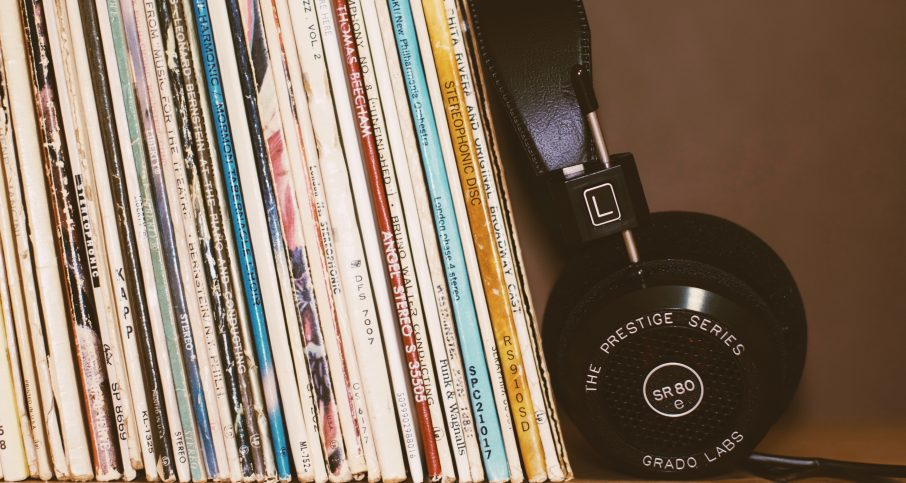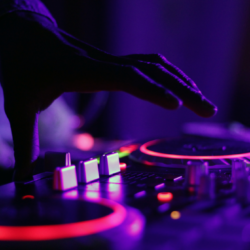A pair of headphones and a favorite playlist are attributes without which it is difficult to imagine everyday life. For some, music helps to concentrate, for others – to cheer up or get distracted. Everyone has their own goals and their own music, but there are principles that are common to all. Alexey Shpenkov, founder of the BRAINY lecture hall, Senior Researcher at the Beehive Academy and R&D Lab, PhD student at Taras Shevchenko National University of Kyiv, lecturer at the Department of Physiology and Anatomy, helped us understand the myths and facts related to music.

Music and emotional state
Scientists identify several stages of the emergence of emotions when listening to music. At the very top of the hierarchy are aesthetic judgments that depend on our experience, and below is the core of biological mechanisms that influence the perception of emotions in music. These mechanisms can be divided into conscious and non-conscious, including reflexes in the brainstem (for example, the response to loud noises may be fear or surprise).
For example, sad music can evoke positive emotions. According to one theory, this happens because sad music helps to understand ourselves and work through our negative states. There is a catharsis and a response. The well-known neurologist Oliver Sacks in his book Musicophilia describes a case when people, after tragic events, closed in on themselves and did not feel anything for a certain period of their lives. But the funeral march caused an emotional shake-up, tears, and after that, according to them, it became much easier.
Music can hurt if you don’t like it. Everyone knows from experience that listening to music you don’t like is hard enough. This can cause strong negative emotions, and stress affects our health and physiological state. If music evokes positive emotions, then it is “our” music and it will not be harmful to us. If negative, then it is better not to listen to it, or find an approach to understand it, so that it causes positive ones. For example, few people like opera because this genre needs to be studied and understood in order to enjoy it.
Music and personal preference
Back in the 1950s, researchers tried to establish a relationship between a person’s preferences in music and his psychological characteristics. A few years ago, we conducted a meta-analysis of works that examined the dependence of personality traits according to a five-factor model (extraversion, agreeableness, conscientiousness, neuroticism, and openness to new experience) and musical preferences. They found a very low relationship between traits such as openness to experience and extraversion and intense genres of music (at 0.2 on a scale where 1 is the highest level of correlation and 0 is no correlation). But it is likely that further research will bring more tangible results. After all, we are able to predict the musical preferences of a person, being a little familiar with him, and we prefer to communicate with people whose musical tastes we share.
Our musical preferences can be influenced by past experience and social environment, but it all depends on the individual and how much they tend to conform. Most often, people try to fit in with the group they interact with, and you can see how a person changes his tastes to the preferences of others. Sometimes we like a song we hear on the radio, but we won’t show it because we’ll worry about how it will characterize us and our tastes. Age also affects: for example, teenagers listen to more aggressive music, which is associated with their hormonal levels.
The context also matters. Remember the famous story about how the famous American violinist Joshua Belligral played the Stradivari violin in the subway, and no one paid any attention to him. Only one woman stopped and recognized the musician. The opposite is true of opera – there is a halo of loftiness around this genre, and many people go to opera just because of their status. They don’t like the music itself, but the atmosphere and the environment. These mechanisms are typical for the perception of art in general, depending on our attitudes: sometimes people designate non-mass genres as their “favorites” in order to emphasize their individuality and peculiarity.
Music and brain activity
Our brain has the ability to synchronize with the rhythm and tempo of music because the transmission of signals between neurons is rhythmic. And through music, the brain of each person can be synchronized with others. So, for example, it happens at concerts. Viewers synchronize their brain waves in the areas of the brain associated with the perception of sound: the sound cortex and the motor cortex, which is responsible for movement. Therefore, it is very convenient to use music for monotonous work or activities where synchronization of many people is needed. Rhythm makes it easier to complete these tasks. A simple example is the march of soldiers in the army.
Musicians and other professions have different brain principles. If you record electrical activity or make an fMRI of the brain, it turns out that when listening to music, the left hemisphere of musicians is more activated, namely, the speech zones that are responsible for processing, perceiving and reproducing speech, while for non-musicians, the right hemisphere is activated.
Musicians understand music differently. They associate sounds with a system of signs (notes), just as we perceive speech sounds, which we associate with language units (letters, words). Also, musicians have more connections between the left and right hemispheres, and therefore the interaction between them is more effective. Musicians learn new languages much better and faster, they perceive accents more easily, they better distinguish tonal changes.
Non-musicians, on the other hand, react to melodies on an emotional level, as if they were listening to a foreign language and could only distinguish intonation changes. That is, even without understanding the words, they could still extract some information about the emotional state of another person from the sound.
There are many pseudo-scientific concepts that, for example, classical music is better for health, and rock music is worse. Hence the “Mozart effect”, according to which classical music supposedly improves our cognitive abilities. This is a myth that, back in the 1980s, was misinterpreted by journalists and spread. At the same time, there really is music that can promote, stimulate, inspire us: for example, energetic music – for physical activity. But you need to understand that even this influence is individual.
There is also a myth that the right hemisphere is creative, and the left is mathematical, and if you want to develop a creative component in yourself, you need to brush your teeth with your left hand, for example. But in this way you will only improve the motor skills of the left hand, and not the creative abilities. Any function is “pumped” only by its direct repetition, improvement. That is, if a person wants to become more creative, he needs to engage in creative activities. Any new experience that is constantly repeated changes neural connections, but they will change precisely in areas related to the corresponding sphere.
New experiences can affect how we perceive the world. For example, we learned something new about the artist – and we begin to be interested in his work. Or, by listening to the band’s previous albums, we can understand how the sound style of the new album was formed. But this knowledge and experience will not affect our deep personal characteristics. Rather, they will become the starting point from which we will perceive new things.


